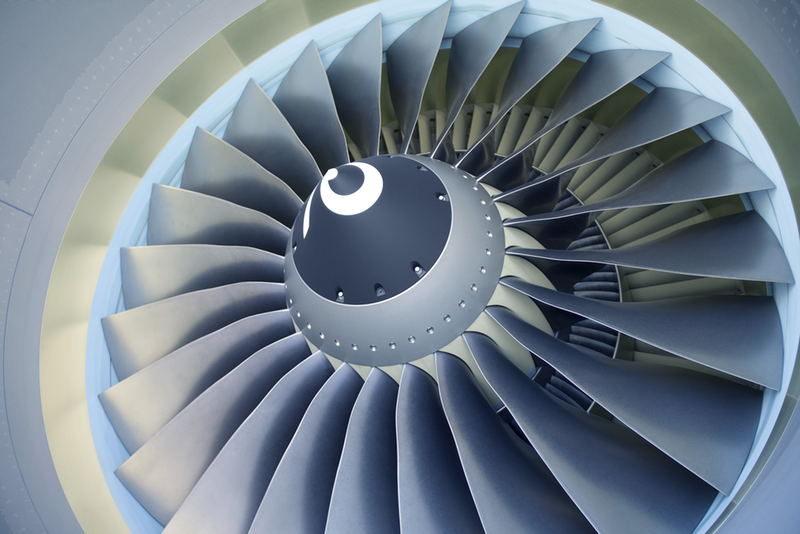The Fastest Spinners
Two research teams have independently produced their own versions of the world’s fastest spinning thing—a nanoscale object rotating more than a billion times per second (60 billion rpm). The internal forces generated were almost enough to rip the object apart, so the technique could lead to a probe of the properties of tiny samples of solid matter under extreme forces. With further development, such hyperfast rotation may also allow the detection of the exotic friction associated with interactions between solid matter and the virtual particles of the quantum vacuum.
In recent years, researchers have turned to laser light to achieve extremely delicate control of the motion of nanoparticles and other small mechanical systems. Intense laser sources can levitate small particles, and physicists have come close to quieting particle motion sufficiently to reveal quantum effects. In rotation experiments, researchers have driven particles to spin more than a million times per second.
Faster spinning could lead to more precise tests of fundamental physics theories, including a hard-to-detect quantum form of rotational friction. In addition, small solid objects could be placed under extreme forces to test how materials break up. Now two independent research teams report results that go well beyond the previous spinning speed record.
In one set of experiments, a team led by Lukas Novotny of the Swiss Federal Institute of Technology (ETH) in Zurich used laser tweezers—a focused light beam that confines a particle within a small region—to levitate a 100-nanometer-diameter silica nanoparticle. Following similar techniques used by others, the researchers forced the particle to spin by using circularly polarized laser light for the tweezers. The rotating electric field of the circularly polarized light exerts a twist because the field induces polarization (charge shifts) in the particle that gives the particle a preferred axis—one that remains aligned with the rotating field.
The earlier experiments that achieved a million rotations per second held the nanoparticle in an evacuated chamber, and the rotational speed was limited by the frictional drag associated with the few air molecules left in the chamber. By using a stronger vacuum, Novotny and colleagues were able to reduce this drag. They also used a longer-wavelength laser beam to reduce the particle heating—a problem that previously caused particles to leave the trap in high vacuum conditions. The team showed that the rotation speed increased as they improved the vacuum, precisely in the way predicted by theory, up to speeds beyond 1 billion rotations per second.
Team member René Reimann, also of ETH, says that these rotations are faster than anything seen in ordinary engineering. For example, the fans in a fighter jet engine spin at less than 1000 rotations per second, as centrifugal force would tear them apart at higher speeds. The nanoparticle can rotate so much faster only because it is so small, although the extreme rotation speeds come close to the breaking point of silica. So the technique could be useful for scientists studying material properties at the nanoscale.
However, the team wasn't initially motivated by an interest in something useful. “To be honest,” says Reimann, “it was just super cool to have the world's fastest rotating mechanical object directly in front of us.”
In closely related work, a team led by Tongcang Li of Purdue University in Indiana has managed comparable spinning speeds with an elongated nano-object, a dumbbell about 170 nanometers wide and 320 nanometers long. Like the others, the team used laser tweezers and circularly polarized light to spin the dumbbell, achieving around a billion rotations per second.
By using dumbbells rather than compact particles, Li and colleagues also made a very different kind of experiment possible. When the team trapped the dumbbell with linearly polarized light, where the electric field direction remains fixed, they were able to measure the small oscillations of the particle about the field direction. This kind of experiment may allow the observation of the so-called Casimir torque, a frictional effect on rotating objects associated with the virtual particles of the quantum vacuum.
“This is a unique controlled dumbbell system,” says quantum physicist Markus Arndt of the University of Vienna. “Casimir tests with an accuracy of better than 10% are still an open challenge—for this group, too—but a fast-spinning dumbbell may make this possible.”
This research is published in Physical Review Letters.
–Mark Buchanan
Mark Buchanan is a freelance science writer who splits his time between Abergavenny, UK, and Notre Dame de Courson, France.





